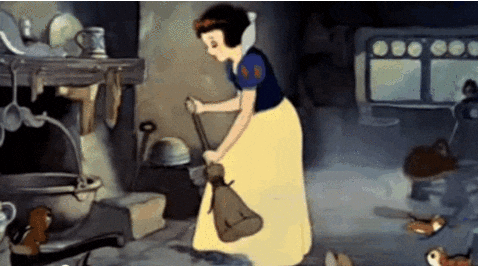Introduction: The Importance of Properly Cleaning Velvet Cushion Covers
Velvet cushion covers bring a luxurious touch to any home decor, but they also come with the responsibility of special care. Ensuring that your velvet cushion covers are clean is not just a matter of aesthetics; it also impacts their longevity and the overall hygiene of your living space. This guide aims to equip you with the knowledge and techniques to keep your velvet cushion covers in pristine condition.
Understanding Velvet: The Unique Fabric Qualities
What is Velvet Made Of?
Velvet is traditionally made from silk, but modern versions can also be constructed from cotton, linen, or synthetic fibers like polyester. The fabric is known for its short, dense pile, which gives it that iconic soft and plush feel.
Why is Velvet Prone to Stains and Damage?
- Velvet's thick pile traps dust and dirt more easily compared to flat-weave fabrics.
- The fabric is generally more absorbent, making it susceptible to stains.
- Improper cleaning can ruin the texture and look of the velvet, causing it to matt or go bald.
Preliminary Steps: Preparing Your Velvet Cushion Covers for Cleaning
Checking the Label
Before you do anything, check the care label on your cushion covers. Manufacturers often provide specific cleaning instructions and warnings. Follow these guidelines closely to avoid damaging your covers.
Spot Testing
Before applying any cleaning solution, conduct a spot test in an inconspicuous area to make sure it won't cause discoloration or damage.
Cleaning Methods: Various Ways to Clean Velvet Cushion Covers
Hand-Washing Velvet Cushion Covers
- Fill a basin with cold water and add a small amount of mild detergent.
- Submerge the cushion cover and gently agitate the water to clean.
- Rinse thoroughly and press out excess water without wringing.
Using a Specialized Upholstery Cleaner
- Apply a velvet-approved upholstery cleaner, following the manufacturer’s instructions.
- Use a soft brush or cloth to gently work the cleaner into the fabric.
- Wipe off with a clean, damp cloth.
Steam Cleaning
- Use a handheld steamer, keeping it at a slight distance to avoid water stains.
- Steam clean in sections, following the direction of the nap.
- Allow to air dry completely before use.
Stain Removal: Dealing with Specific Types of Stains
Removing Water-Based Stains
- Blot the area with a dry, white cloth.
- Apply a mixture of mild detergent and water using a soft brush or cloth.
- Dab gently to lift the stain, then rinse with a clean, damp cloth.
Eliminating Oil-Based Stains
- Sprinkle a layer of cornstarch or talcum powder over the stain to absorb the oil.
- Let it sit for at least an hour, then gently brush it off.
- If the stain persists, you may need to consult professional cleaning services.
Also if you looking for the top UK velvet cushion covers: click here.
Conclusion: The Joy of Maintaining Luxurious Velvet Cushion Covers
Velvet cushion covers are more than just a decorative accessory; they're an investment in both style and comfort. When cared for properly, they can be a long-lasting addition to your home décor, retaining their rich texture and vibrant color for years. Armed with knowledge about the unique properties of velvet, you're in a better position to maintain these luxurious pieces in pristine condition.
The key to longevity is not just in how you clean them, but also in regular maintenance. By regularly vacuuming and spot-cleaning minor spills or stains, you can prevent a buildup of dirt and grime that would eventually require more aggressive cleaning measures. In between deeper cleanings, a quick once-over with a soft cloth or specialized upholstery brush can keep the fabric's pile feeling plush and looking opulent.
The methods and tips discussed in this guide have equipped you to tackle various challenges—from removing stubborn stains to refreshing the fabric. Whether it's hand-washing, using a specialized cleaner, or even steam cleaning, you now have a range of options tailored to meet the specific needs of velvet fabric.
But beyond that, your choice of cleaning methods also impacts the environment. Opting for eco-friendly cleaners and minimizing water usage are small steps that contribute to sustainability. So, in taking care of your velvet cushion covers, you're not only preserving your investment but also making a responsible environmental choice.
In summary, proper care extends far beyond mere aesthetics. It's about enhancing the lifespan of your velvet cushion covers, keeping them as beautiful and inviting as the day you bought them, and doing so in an eco-conscious way. You're now well-prepared to ensure that your velvet cushion covers remain a cherished part of your home décor for years to come.
Frequently Asked Questions
Can I machine wash velvet cushion covers?
It's generally not recommended to machine wash velvet cushion covers as it can damage the fabric, cause shrinkage, and lead to color fading. Always read the care label on your cushion covers; if it specifically states that machine washing is permissible, proceed with extreme caution and use a delicate cycle. Otherwise, stick to hand washing or specialized upholstery cleaners.
How often should I clean my velvet cushion covers?
Cleaning frequency depends on usage and individual circumstances. If the cushion covers are in a high-traffic area or are exposed to pets or children, consider cleaning them every 3-4 months. Otherwise, a semi-annual cleaning should suffice for general upkeep. Regularly vacuuming the covers in between deep cleans can also help maintain their appearance.
What should I avoid when cleaning velvet?
- Do not use bleach or harsh chemicals as they can damage the fabric.
- Avoid using excessive water as it can lead to water stains.
- Never wring the fabric; this can distort its shape.
- Do not dry in direct sunlight, as it can cause the color to fade.











